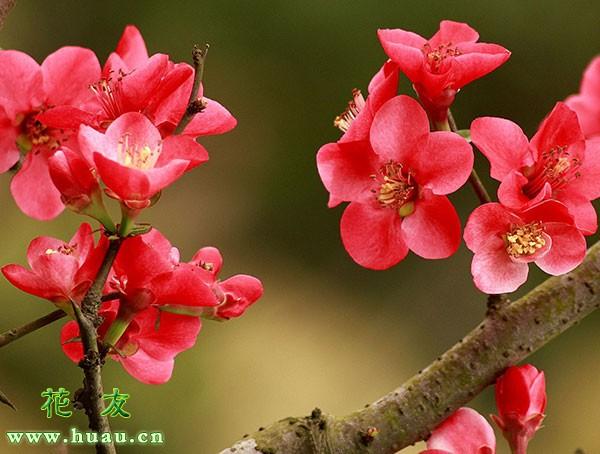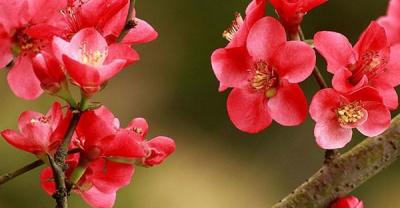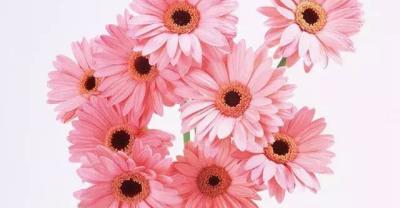Culture methods and maintenance points of crabapple flower
Crabapple flowers are loved by many literati. Su Shi wrote, "he is only afraid of sleeping late at night, so he burns high candles and shines red makeup." The crabapple flower is a symbol of wealth.
Begonia flowers are very resistant to sulfur dioxide. The leaves are bright, the four seasons are evergreen, and when the flowers bloom, the beautiful crowns are fragrant. Such begonia flowers are of great use. It has obvious resistance to sulfur dioxide, hydrogen fluoride, nitric acid fog and phosgene, and its absorption capacity to sulfur dioxide is even more prominent. according to the indoor air conditions, one or several pots of crabapple flowers are purchased to effectively remove harmful gases from home.
It belongs to the genus Malus of Rosaceae, and it is also a plant endemic to China. Begonia is a small deciduous tree. Its bark is grayish brown and smooth. The leaves are alternate, the surface is dark green and shiny, and the back is grayish green with short pilose. Careful observation shows that the petiole of the crabapple flower is slender and there are two lanceolate stipules at the base. The yellowish green pear is shaped like a fruit ball. Begonia flower is divided into Xifu begonia, weeping begonia, crabapple fruit, Hubei crabapple and other varieties.

Begonia, sexual like the sun, but also can withstand semi-shade, cold resistance, environmental requirements are not strict, suitable for loose and fertile, deep soil, good drainage sandy soil growth. Tripterygium has strong adaptability and extensive cultivation management.
Less watering during the budding period, keep the basin soil slightly dry, too wet will lead to rotting roots. During the growing period, water is watered every two days, and water is often sprayed around the plant to increase air humidity. It is worth noting that when watering, do not pour water from the leaves and stem tops, but along the edge of the flowerpot, otherwise the stems and leaves are easy to accumulate water and rot.
Crabapple flowers should be watered and fertilized together. In autumn, after the leaves fall, they must apply a large amount of fertilizer to replenish their lost nutrients so that they can stay healthy. When the spring buds sprout, they should apply organic fertilizer once and water it once.
Tripterygium is afraid of waterlogging, otherwise it is easy to rot its roots, so watering must be moderate, properly watering several times a year in the dry season, and less or no watering before October to the following spring. Fertilization can be carried out after flowering, with mature human and animal fertilizer, stable fertilizer applied 1-2 times, and cut off the old branches to promote the germination of new shoots, and apply organic fertilizer again after autumn to increase the amount of flowering in the second year. When the winter temperature is below-20 ℃, outdoor plants should pay attention to cold prevention, potted Begonia can be moved into the indoor overwintering.
The common disease of sticking Begonia is pear juniper pain, also known as pear brocade pain. The disease is infected by two hosts. The first host is cypress, such as juniper, dragon cypress, deer horn cypress, etc., and the second host is stick stem begonia, weeping begonia, mountain juniper and so on. After invading juniper and cypress, the bacteria will produce yellowish spots on leaf axils or branchlets in the first year, and then swell up. Between February and March of the second year, brown rice grains will be produced, breaking through the epidermis, that is, teliospore horn. The winter spore horn is solitary or aggregated, which makes the branches of the plant expand. After Tripterygium as the second host was infected with teliospore horn, small yellow-green spots appeared on the leaf front in the first ten days of April-May, and then expanded into round yellow spots. There are several small yellow spots on the disease spot in the early stage and become black in the later stage, which thickens the back of the leaf gradually, produces some gray-white hair, and becomes yellowish brown powder from August to September. In serious cases, the diseased leaves are full of plants, the leaves are deformed, and the surface is uneven, resulting in early withering and early falling of the leaves, and even death of the plants. The management of Tripterygium is relatively simple, because its flowering is mainly short branches, so it is necessary to cut the long branches properly and cut them into hemispheres before germination in spring, so as to stimulate more germinating shoots. During the summer growth period, the growing branches should also be coring.
In the process of cultivation and management, attention should be paid to watering in dry season, and it is best to apply mature organic fertilizer or appropriate amount of compound fertilizer (N, P, K elements) in summer. To promote flowering in pots, suitable plants can be dug up from September to October and kept in a cool place for a period of time. After entering winter, they are moved into 15 ℃-20 ℃ greenhouse, where water is often sprayed on the branches. After about 25 days, they can blossom, which can be used as New Year's Day and Spring Festival ornamental.
For more flower growing experience, succulent cultivation, bonsai appreciation, and communication with flower friends, please move to Huayou WeChat community: http://m.huau.cn, or follow WeChat account: huaucn, join Huayou WeChat group, please add Wechat private number: wwwhuaucn.
- Prev

Broiler breeding-- three hazards of poor ventilation and hypoxia
In henhouses with high breeding density, the chances of air infectious diseases increase, especially when the content of ammonia is high, respiratory diseases are often induced. The later stage management of broiler production should be.
- Next

A complete collection of "arowana" culture with the status of king of the aquarium
In the five thousand years of history of Chinese origin, "dragon" is the symbol of the spirit of the Chinese nation. It is full of strength, hope and Chinese people's desire for a better life.
Related
- On the eggshell is a badge full of pride. British Poultry Egg Market and Consumer observation
- British study: 72% of Britons are willing to buy native eggs raised by insects
- Guidelines for friendly egg production revised the increase of space in chicken sheds can not be forced to change feathers and lay eggs.
- Risk of delay in customs clearance Australia suspends lobster exports to China
- Pig semen-the Vector of virus Transmission (4)
- Pig semen-the Vector of virus Transmission (3)
- Five common causes of difficult control of classical swine fever in clinic and their countermeasures
- Foot-and-mouth disease is the most effective way to prevent it!
- PED is the number one killer of piglets and has to be guarded against in autumn and winter.
- What is "yellow fat pig"? Have you ever heard the pig collector talk about "yellow fat pig"?

